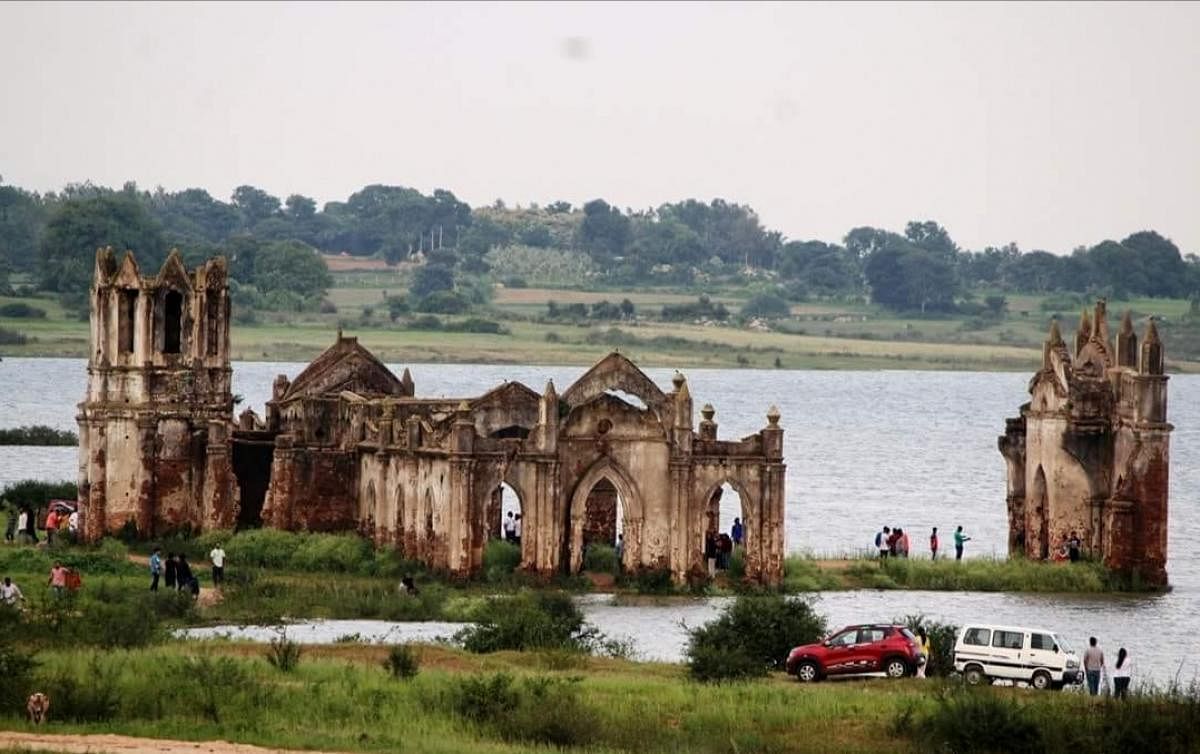
It is a church whose ruins hold many stories that are interesting and intriguing at the same time. Abandoned after the construction of the Hemavathi Dam and Reservoir in 1960, it stands as a testimony to its glorious past. Though known famously as Shettihalli Church owing to its close proximity to the tiny village of Shettihalli just 2 km away, this church was known as Rosary Church in its heyday.
Believed to have been conceived by Abbe J A Dubois, a French Catholic missionary, this church dates back to 1860, and serves as a good example of Gothic architecture. When it came to construction, the missionaries left no stone unturned to make it a one-of-its-kind edifice. Reportedly constructed with mortar, bricks and a mixture of jaggery and eggs, this structure is believed to have been very strong and capable of withstanding the vagaries of nature. Several talented architects were enlisted to make it really special. To begin with, a single-storeyed church was built with a tower containing two bells. Gypsum from Egypt, glass from Belgium, paintings from Scotland, decorative items from Italy and Brazil, and palm trees from Malaysia were used in the construction of the church.
The idea behind the setting up of the church was to serve the Christian communities residing in the areas in and around Hassan including Shettihalli, Changaravalli, Madanakopplu, Doddkopplu and Gaddekopplu. Rendering yeoman service to the poor and needy in matters of health, the church soon acquired world fame, with envoys from Germany, England, Australia and other European nations paying it a visit.
In 1960, when priest Deshant started a hospital and the doctors of the hospital vaccinated people whenever smallpox, cholera and plague struck them, the church began to be known as Arogyaswamy Church, a name that stuck till it met its watery end. The church, always in the forefront in helping the needy, had sheltered the destitute when a famine struck the area in 1823. Though the church was started to propagate Christianity in the area, it helped people from all walks of life, irrespective of their religious affiliations. Many Christian scholars including Rev F Kittel, B L Rice, John Hands and Hermann Moggling are believed to have stayed in the church during their research work.
A church with such a glorious past is sadly in ruins today. However, it attracts a number of tourists owing to its eerie charm. Yes, you read it right. An eerie charm that almost leaves you breathless. During monsoons, when the water level in Hemavathi rises, only a part of the church will be visible. No wonder, it is also known famously as the ‘Floating Church’ or the ‘Submerged Church’. Call it what you wish, this church is worth a visit. However, to enjoy the haunting beauty of this church in its entirety, it is best to visit the place in two different seasons. While visiting it between July and October affords you the ‘Floating Church’ or ‘Submerged Church’ views, December to May allows you to enjoy its beauty in all its glory.